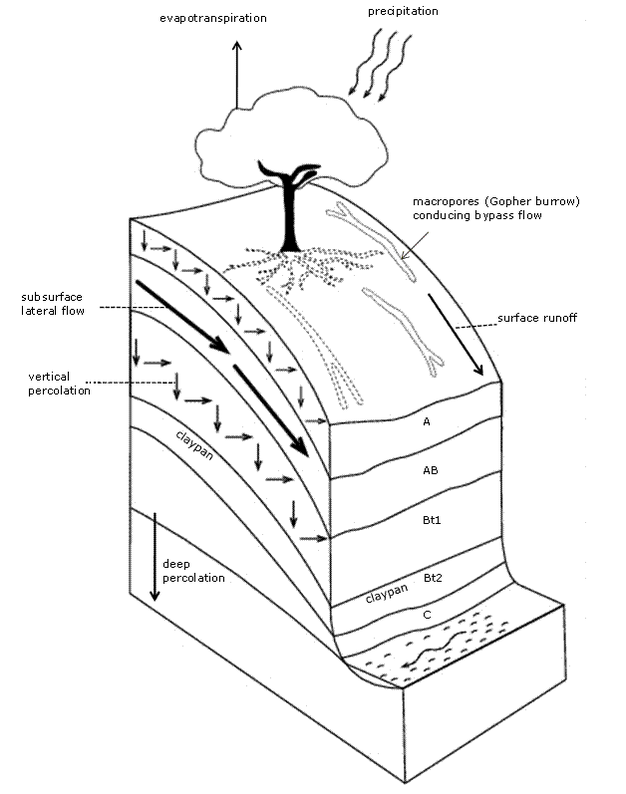What’s the connection between soil and water?
Soil and water are closely interconnected. Soils are the living skin of the Earth with area of about 150 million km2. Precipitation falling on this large surface can take a number of routes: flow over the surface, especially on the steep slopes or on soils with compacted surfaces, down to reach the nearest water courses; infiltrate in soils and move deeper as groundwater. During these processes, soils act as buffer for water movement. The amount and timing of precipitation ultimately governs soil moisture content, availability and flow.
Water falling to the soil surface can lead to flash floods and deprives the soil of water for the growing vegetation and for the many soil organisms. It can also cause soil erosion by which the soil particles and nutrients are transported to other sites or streams and rivers. Such surface water can also wash away freshly applied fertilisers and manure from fields to downstream water bodies leading to eutrophication.
Most water falling to soil surface infiltrate in soils depending on nature of soils: quickly pass through sandy soils, longer in loamy soils and longest in clay soils. Soil acts as a very good filter as it can absorb some of the impurities that the rainfall may contain. Soil texture, soil structure, and slope have the largest impact on infiltration rate, they also controls water-holding capacity. Soils with smaller particles (silt and clay) have a larger surface area than those with larger sand particles, and a large surface area allows a soil to hold more water. Water that eventually moves on through the soil can pick up excess nutrients from the soil and carry them in solution to the groundwater, from which they can pass into streams, rivers and into the sea.
